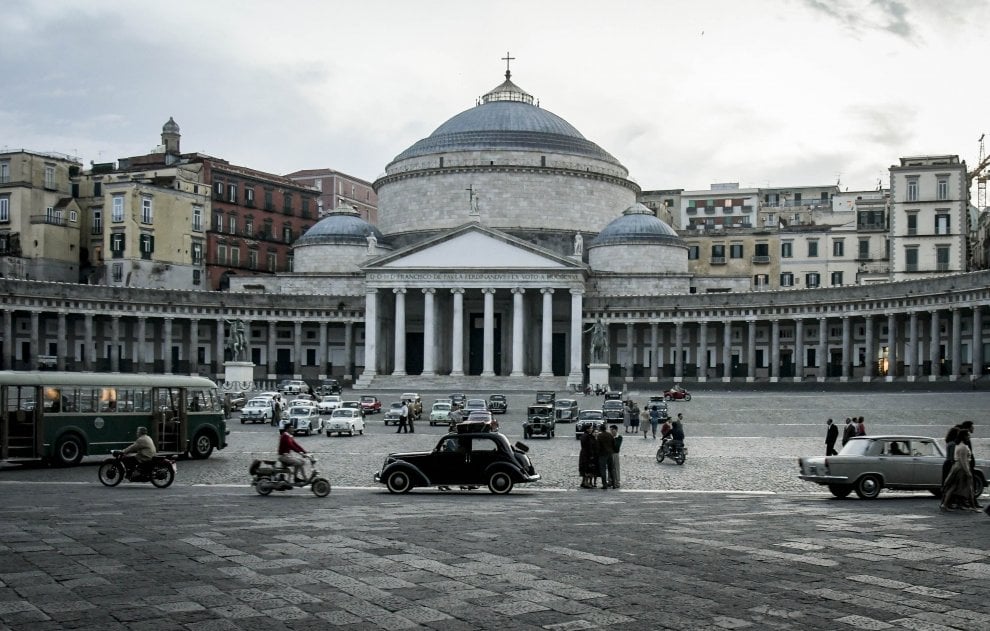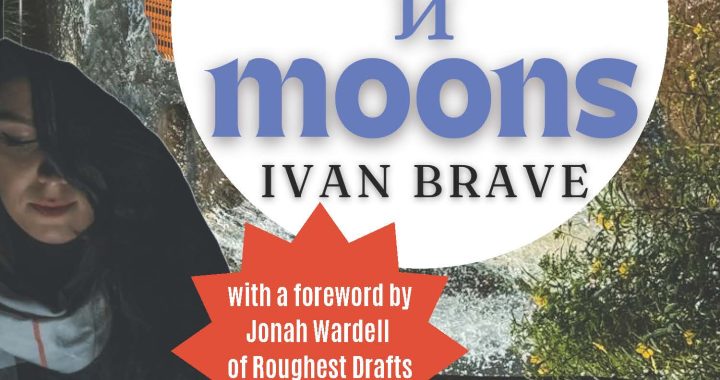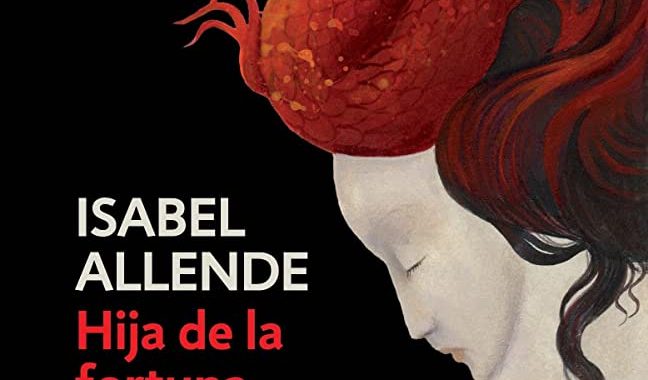Last Friday night, in bed with a cup of chamomile tea, I finished the last chapter of Elena Ferrante’s Neapolitan Quartet. What a rush, I thought, staring at the wooden end of an exhausted incense stick on my desk; what a rush, despite the peace around me. I closed the fourth book, itself full of force, with a calmness reserved for revelations, insights, and joy. My head was sweaty, as if I had exerted myself physically, exhaling with the great heave of a task completed. The lights dimmed. My head found a pillow, to ponder. I went to bed.
Today, the four books in the series mean a lot to me. They probably will for a long, long time.
As with any extensive work of art that takes longer than one viewing or siting to ingest, let alone digest, the events of your personal life intertwine with the experience of the art. Put bluntly, as you read a story in a book, the story of your daily life mingles with the story of the book. I could tell you exactly where I was when I was reading, for example, Gilgamesh (poolside of my aunt and uncle’s house in Agrogué, Buenos Aires). There might be no relationship in any objective sense, say, between one king’s search for immortality and the smell of chlorine mixing with the sting of an over-scratched mosquito bite. But, personally, it is a great literary exercise to live one’s own life while inhabiting the mind of a character. (By the way, fruitless searches will forever smell like chlorine for me, relating an itch that only bleeds to a desire that never ceases.)
In the case of Ferrante’s four Neapolitan novels (“the Quartet,” because, of course, Ferrante has written a plethora of works set in her native city), I have enjoyed them and drawn inspiration from them like nectar from a flower, or vitamins from a carton of fruit juice.
It was this summer, my brother and I traveling through Sicily, when I came across book 1: My Brilliant Friend. The details of that trip are reserved for the post I will write in continuation of the story of summer 2018. What can be stated now is that two friends, a couple from university, had rented a two floor, one-bedroom apartment in the heart of Ortigia, Sicily: home of endless beauty, and the site of one friend’s new film.
My brother and I were there for about a week, cooking pasta and reciting poetry each wine-colored night of our stay. The director friend was a poet. His lady a writer, who played the banjo with glistening emphasis. Despite the enthusiasm that accompanied those evenings, there lingered in me a sense of unease. The all too near future preoccupied my mind: my brother would return home at the end of the week, while I had three weeks with no plans, but to roam. The poet recommended Greece. My brother recommended I return to New York, to settle my affairs and find a job. “No matter what you do,” my poet friend said, with a serenity I will never forget, “and no matter where you go: my deepest, deepest wish for you these next three weeks is to get lost, just get utterly lost.”
He said it with warmth. But it wasn’t enough to figure out what my next move should be. So I turned to literature for a more explicit answer.
The banjo-playing friend had just finished the first novel in Ferrante’s Quartet. “Take it,” she said, in one breath, “it’s really good.” Maybe I should go to Naples, I figured. My ancestors were from there. I took the novel. And I booked a ferry and a train ride from Catania to the mainland, just like that.
Tbh, I feel odd writing these paragraphs. It has taken me various tries. First, I don’t know if it’s fair to call these two friends a “couple,” though they are faithful and fair to each other, but, then again, who can be tied down to labels these days — words weigh too much, especially to a poet (the director) and a writer (owner of the text, traveler and confidant). I can’t say I would indulge in a similar “openness,” but alas, moving on . . . Second, to this day I have yet to return the book to the young lady. Guilty, I write with unease, when will she ask for it back, I desperately want to keep the novel, though I am perfectly willing to purchase my own copy and thereby sooth my conscious, but, but . . . Third, my brother and I overdid our stay with the young couple. Again, shielding myself for now, I won’t detail what happened. Just know that we almost overstayed our welcome with the couple, that I took more with me than just her copy of her book, which she hasn’t asked me about, but also a guilty awkward memory between us four. That will be covered in the Sicily post, promise. Moving on.
The pseudonymous author, Elena “Badass” Ferrante, does a fantastic job of hypnotizing you for thousands of pages. At a glance, attempting to describe the four-book series, the story may sound cheesy. Nevertheless, underneath that wedding dress of Romance fiction which is her Quartet, there tremors a fantastic body of work.
Unequivocally, whoever penned these books studied literature from the ground up: from the Aeneid, to etymological dictionaries, from reference texts, to nineteenth century novels like Louisa May Alcott’s Little Women. There breathes here something for everyone, readers, writers, nerds, lovers, pedestrians, even freaky obsessive types. Not the common first book everyone has, let’s be clear noted, but the fourth book only true fans make it to ran a fourteenth reprinting in 2018; additionally, there is a celebrated TV show now. Go figure, the books are an international success. (True, I only know the English translation — and I hear the Italian original is more of a masterpiece. However, I say hogwash to the haters! Let’s applaud Ann Goldstein, who translated these, as well as Jhumpa Lahiri’s Italian novels, and more. Madame Goldstein, you are a diamond. We know translating is just as arduous as “writing.” One day, when I translate, I hope to draw from your sheer, shy, passion of passion for excellent letters. Every genius needs a muse, and a translator.)
A note on the genius: the real Ferrante was smart to shield herself, by authoring a pen name. Now she can write anything, under a different alias if she pleases. Her name acts as a testament to her creativity: she invented not only characters, or narrators, but an author, when she invented herself. Herself? Maybe the real author is a male, something of an Alfonso-type from the story: gay, emulating, steadfast and tragic. The world may never know. Unless some die-hards figure it out — if you google her, a picture shows up, even this article turns up, claiming our beloved EF is a Polish-Italian writer. Until truths unfold, the rest of us will enjoy the series, comme ça, as the fruit of a mystery, the peppercorn of genius.
Genius. Just genius. What I love most about the pseudonym is the sound of the word. Ferocious at the front, like a growl that quickly bites the listener with its “ante.” Turn the “F” into an “H,” as a lot of romance words did when they migrated to Spanish, and you get the word “Herrante,” which, to you El quijote fans out there, could, with a tiny stretch of imagination, be considered an homage to the caballero andante, errante. What a name, what a story, what a rush!
Why a rush? I wonder, as I toss and turn in bed. Because I read the 1700 pages at a, for me, unprecedented pace: twenty-two days. But apparently three weeks is nothing. A Milanese neighbor of mine claims to have read all four books in one week, locked in her room, sick in bed. Still other miracle readers claim less time. Point being, the pages fly by . . . Folks, you truly are teleported when you read these pages.
If you permit me, I should like to reflect on why we read these books so fast. I attribute it not only to the usual plot, setting, theme, but also a specific set of tools, employed by the author, that serve to turn the page. (You’ll forgive me if I make up the terms, for now, not knowing the technical names, just yet.)
Ferrante’s first tool is memory recall. Imagine how slow you would read if you had to flip back to an earlier page every time an old childhood friend is brought back to the stage. Weaving her plot, pushing the reader forward, every few pages the narrator will label an old character, or recall a past event, not out of the blue. This act of remembering allows the reader to remember along with the narrator. Instead of flipping back, we turn forward, faster and faster, with anticipation. It sounds obvious, because in our lives we do this all the time, living and remembering are almost synonymous, until we get to a blank page, deserving only of our grammatical left to right (in English) linear typing of words. Writers, I realized, reading Ferrante, her books so full of advice for writers, do well to make the page-as-you-write-it as close to life-as-you-live-it, so readers can read as you’ve meant it, and live as your characters do: full of life — with all its reminiscing and regrets, fantasy and dreams. Yes Ferrante does all this on the page. Buy her books.
Ferrante’s second tool is imaginative setting. For the author, it isn’t enough to label a place; it would be easy to type “In Naples, in the neighborhood, it was hot, it was whatever, insert miscellaneous description.” Writing beyond temperature, beyond names, historical context — “not just the bare face of things,” as one character puts it — the narrator finds recourse in her imagination, to paint vivid scenes. When describing a place, the narrator describes her relation to it, or makes up details (fiction). Or when delivering a poignant historic note, she delivers the personal significance of said note: turning fact to art. It’s not just that the young girls of book 1 walk along the sun-kissed, sea-swept lungomare of Naples in their youth, or how the rich city folks disparage them for their backwards suburban dress. These are facts. Actually what counts is the fact that the girls’ parents work, and kiss ass, in this very downtown neighborhood, and that these girls must keep their mouth shut too when insulted — making what was supposed to be a pleasant Saturday morning outing, into a humiliating catastrophe.
Ferrante’s third (and, fine, there are more than just three) tool underscores her thematic interests. It is explicit narration. The desire to leave details scattered about, or motifs unmarked, tempts the young writer. We like it when the reader figures out the writing, puts a little work in. Others satisfy themselves with the skin and genitals of reality. Is the opposite of a challenging yet innovative text some sort of easy to interpret pop genre novel? The great debate. Some authors write cursory tales, full of sex and guts, while others strive for depth and complication. The tragedy lies in picking sides. If you’ve read Ferrante, you know you can manage both. In the end, the avid writer wants to produce and be engaged; the avid reader wants to consume and be stimulated. A novel that only spreads thin is a puddle. A novel that only goes deep is a man hole. But a novel that reaches depth and accessibility is an ocean. And oceans connect, as much as they inspire and strike awe.
Or maybe. Just maybe. I’m thinking: the real Elena Ferrante is the brainchild of two writers. That’s how the books achieve such distinct, counterpoint, juxtaposed ideals. Remember all the couples that join forces in the story? Book one, titled My Brilliant Friend, begins with Greco writing: “My friendship with Lila began the day we decided to go up the stairs that led, step by step, flight after flight, to the door of Don Achille’s apartment.” Book two has Lila and Nino, Greco and Pietro. Book Three Nino and Greco, Lila and Enzo. Book four sees their kids married, has Greco and the Holy Ghost! Sort of. (Buy the books.) Hm, let’s just say everyone mixes with everyone. And each mixture produces unparalleled results.
Power couples. A theme. Not just in the mysterious Ferrante novels, but about Ferrante, and to Ferrante: remember I said her novels intertwined with my life? Stay tuned.
Photo source: La Repubblica (on set for Ferrante’s My Brilliant Friend – the TV series)





Pingback: Sicilia: a mistake to mull over, sing-along - iván BRAVE